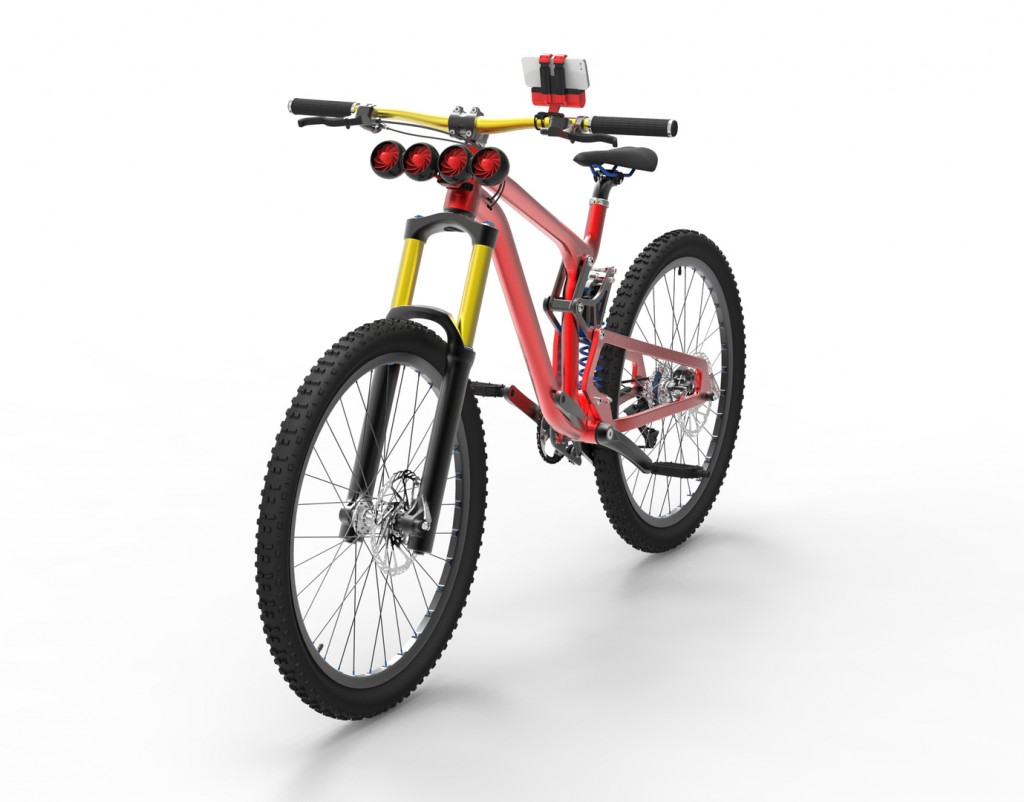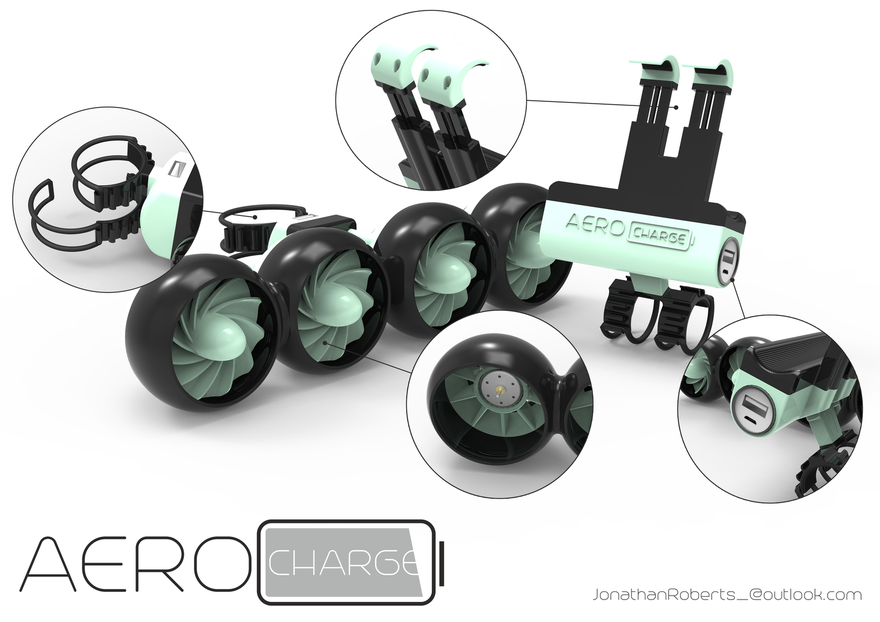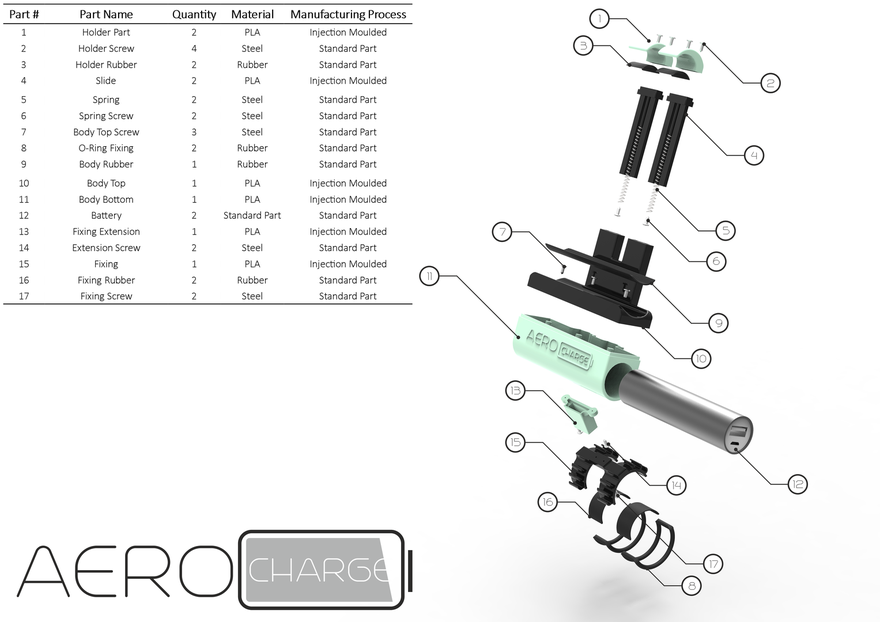 It really amazes me that with today’s technology, we still haven’t found a way to create a more efficient, longer-lasting solution for powering our mobile devices. While most of us own sophisticated smarthphones which have the ability to do so much for us on a daily basis, we still don’t have the technology to keep these devices powered for much more than a day without needing to be recharged. I personally would have thought that battery technology would be much further along than it currently is, if you were to ask me 10 years ago.
It really amazes me that with today’s technology, we still haven’t found a way to create a more efficient, longer-lasting solution for powering our mobile devices. While most of us own sophisticated smarthphones which have the ability to do so much for us on a daily basis, we still don’t have the technology to keep these devices powered for much more than a day without needing to be recharged. I personally would have thought that battery technology would be much further along than it currently is, if you were to ask me 10 years ago.
For one man, named Jonathan Roberts, he too is not a fan of having to constantly charge his smartphone. This problem becomes an even bigger issue for cyclists who depend on their phones for navigation, health monitoring and more. Long bike trips can span days, with little access to electricity which is needed in order to recharge a mobile device’s battery. This is what led him to create a very unique 3D printed mobile charging system called the AeroCharge.
“As you cycle, potential energy passes by as wind,” Roberts tells 3DPrint.com. “This energy is wasted unless it is harnessed and turned into electricity. What AeroCharge does is convert this potential energy into electricity which can then be used to charge up and power a mobile phone whilst you cycle. The circuit inside the product has a regulator connected to the USB socket. This means that the smartphone can draw as much amperage and voltage (charge) as it needs from the battery and the circuit will regulate to that amount, allowing the device to juice up safely. This is in place to prevent damage to your phone because different devices need different amounts of voltage and amperage in order to charge. All you need is to connect your USB to smartphone lead and you’re good to go.”
The fans located on the front of the system, which are mounted to the front of the bike, were designed specifically to harness as much wind as they can. The blades have been designed so that they are angled in the most aerodynamical way possible. They will spin no matter how fast or slow a cyclist is riding, with faster speeds generating more electricity.
The fans on the AeroCharge each drive a small two-volt low-inertia generator that all piggyback one another to provide for maximum power output and efficiency. The system then regulates the current and power so that the phone is charged with the correct amount of voltage and amperage, ensuring that the battery isn’t overloaded and that it is completely safe to use.
Another cool feature with the AeroCharge is the fact that all of the power that it generates is fed into a separate battery, not the battery of the phone itself. This allows your phone to continue charging even if you have stopped peddling for a bit.
The Aerocharge consists of 99% 3D printed parts, with everything except for the electrical components, screws and rubber grips being printed on Roberts’ Ultimaker 2 3D printer.
“3D printing was the best option for me to quickly prototype my ideas as it was easily accessible and fairly inexpensive,” Roberts tells us. “The prototypes I was making needed to be accurate, good quality and strong and 3D printing in my view is definitely the best way to turn your CAD models into quick prototypes for testing.”
To design this rather innovative system, Roberts first started out with simple sketches and diagrams. Once he had a couple of ideas in his head, he started to model them using Solidworks. Cura and Meshmixer were then used in order to prepare the parts for 3D printing. As you can see in the video below, the 3D printed AeroCharge came out quite well.
“AeroCharge can provide as much voltage as a smartphone requires which is around about 5v depending on which device you have,” Roberts explained. “However, in order to charge, amperage is needed. A standard PC USB port provides approximately 500mA (0.5A) which can fully charge a smartphone from 0-100% in around about two hours depending on size of phone batteries etc.”
Roberts tells us that he’d love to make a business out of this product, but he admits that he is still a “newbie” in the design world and he plans on perfecting his skills prior to creating a business based around it. If and when he does bring the AeroCharge to market, he will use injection molding in order to mass produce them, as it would be a more efficient and faster way for creating multiples of the product. He anticipates the AeroCharge would sell for around £40-£50 ($60-$75).
What do you think about this clever creation? Would you fork over $60 to own one of these chargers for your own bike? Discuss in the AeroCharger forum thread on 3DPB.com. Check out the video below.
Subscribe to Our Email Newsletter
Stay up-to-date on all the latest news from the 3D printing industry and receive information and offers from third party vendors.
You May Also Like
Profiling a Construction 3D Printing Pioneer: US Army Corps of Engineers’ Megan Kreiger
The world of construction 3D printing is still so new that the true experts can probably be counted on two hands. Among them is Megan Kreiger, Portfolio Manager of Additive...
US Army Corps of Engineers Taps Lincoln Electric & Eaton for Largest 3D Printed US Civil Works Part
The Soo Locks sit on the US-Canadian border, enabling maritime travel between Lake Superior and Lake Huron, from which ships can reach the rest of the Great Lakes. Crafts carrying...
Construction 3D Printing CEO Reflects on Being Female in Construction
Natalie Wadley, CEO of ChangeMaker3D, could hear the words of her daughter sitting next to her resounding in her head. “Mum, MUM, you’ve won!” Wadley had just won the prestigious...
1Print to Commercialize 3D Printed Coastal Resilience Solutions
1Print, a company that specializes in deploying additive construction (AC) for infrastructure projects, has entered an agreement with the University of Miami (UM) to accelerate commercialization of the SEAHIVE shoreline...

































